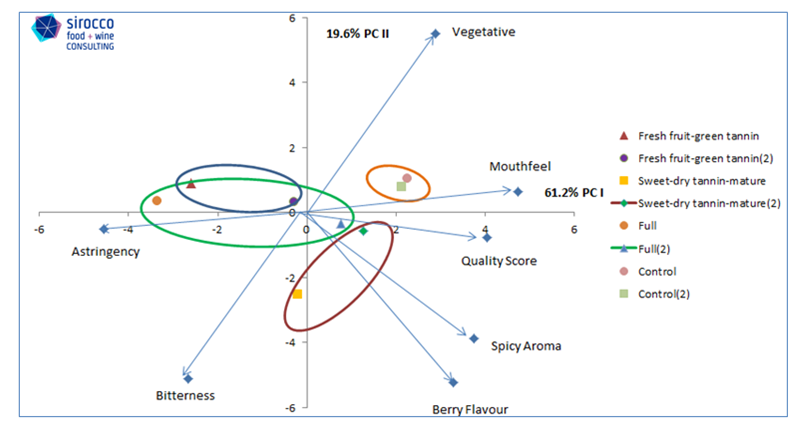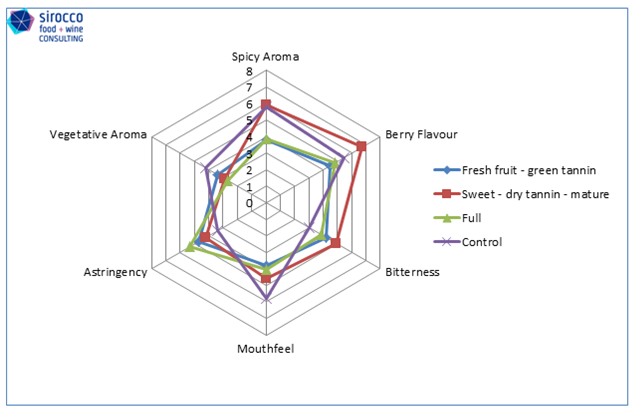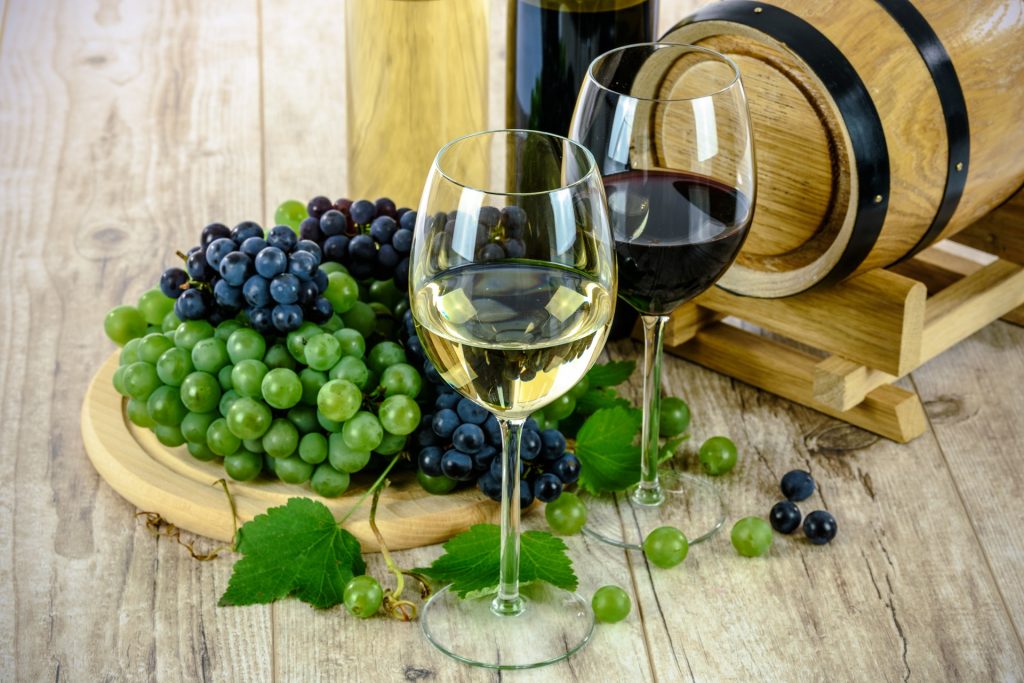Nuance Winery Supplies contracted the services of Sirocco Food & Wine Consulting to conduct sensory evaluation on wine adjusted with enological tannins (Vason Enologica). A fruit-forward low astringency Chilean Cabernet Sauvignon was used as the wine base and control for the study. Three finishing tannin kits were selected for tannin supplementation. The tannin-enhanced wines were compared to the wine base for aroma, flavour and mouthfeel characteristics as well as overall quality. The tannin kits were chosen based on their functional properties. They were characterised as follows: “Full”, “Fresh Fruit-Green Tannin” and “Sweet-Dry Tannin-Mature.”
The 4 wines were assessed by a trained panel following a descriptive analysis methodology. Out of 15 attributes, 6 attributes (“vegetative aroma”, “spicy aroma”, “berry flavour”, “bitterness”, “astringency”,”mouthfeel”) were statistically significant (p-values ranging from 0.055 to 0.11). The wines were not significantly different for “overall quality” but showed, nonetheless, an interesting trend. Wine supplemented with the “Sweet-Dry Tannin-Mature” kit obtained the highest average quality scores. This result is confirmed by the Principal Component Analysis plot (See Fig 1).


Wine sample profiling using descriptive analysis was successful in characterising and quantifying differences amongst the Cabernet Sauvignon base wine and the same wine treated with 3 different types of finishing tannins. While close in sensory profiles, the wines were differentiated based on vegetative and spicy aroma, berry flavour, astringency, bitterness and mouthfeel. The addition of finishing tannins provided added astringency, bitterness and fruity flavour as shown on the PCA plot and cobweb diagram (See Fig 2). The “Fresh Fruit-Green Tannin” and “Full” tannin supplementation led to wines that displayed overpowering astringency as well as muted vegetative, spicy aromas and berry flavour. On the contrary, the “Sweet – Dry Tannin – Mature” tannin kit appeared to enhance the perception of the wine base: the wine’s berry flavour was enhanced and the wine’s spicy aroma was preserved. The tannin kit increased the wine’s astringency and bitterness yet retained product quality. This tannin treatment seemed to complement the Cabernet Sauvignon wine base well.
This sensory study has demonstrated the important role that enological tannins play in helping structure and enhance wine. They constitute a great tool for the winemaker to ensure product quality and customer acceptance. As this study shows, commercial tannins vary in their functional properties and must therefore be used in the right concentration. Matching the tannin treatment to the wine is key. Well integrated, they can enhance the sensory perception of wine.

